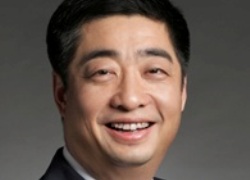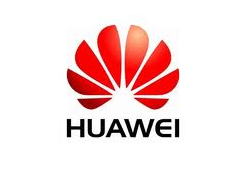Huawei rotating CEO Ken Hu: Building intelligent networks and reshaping the world with mobile

Huawei rotating CEO Ken Hu
The 8th Global Mobile Broadband Forum kicked off in London yesterday, gathering over 1,400 leaders from mobile telecom operators, vertical industries, standards organisations, and industrial alliances around the world. Ken Hu, the deputy chairman and rotating CEO at Huawei,outlined a world where all things are connected, presenting telecom operators with nearly limitless growth potential.
Today, there are 20 million shipping containers in the world, and 300 million LED streetlamps. There will be 1.8 billion water metres by 2025, and every year, 100 million new bicycles roll off the factory floor. “Each of these is a potential new subscriber,” said Hu. “But to support a future where all things are connected, telecom operators need to strengthen network performance and management. Future networks need to be application-centric, data-driven – and eventually, intelligent.”
“We have to believe that everything can be connected and will be connected,” he continued. “These opportunities are real. But to seize them, we need a new model.”
Hu calls this new model the “scale-out and scale-up approach.” First, he recommends that telcos scale out to provide more connections. This will generate revenue, and pave the way for scaling up. Next, they can work with partners to develop value-added services based on the specific needs of industrial applications.
To support these valued-added services, Hu stressed the importance of strengthening networks and making them smarter. “Telcos can start by accelerating deployment of 4.5G and NB-IoT to boost network performance and pave the way for 5G. Then they need to take a look at O&M.”
On average, network equipment O&M costs roughly three to four times the cost of the equipment itself. Furthermore, 70% of major network faults are the result of simple human error. “This is not sustainable,” said Hu. “But big data analytics and artificial intelligence have given us the tools we need to build smarter networks.”
“When facing structural problems, we need architectural innovation,” Hu explained. “With operational data, we can feed ‘digital brains’ of sorts that control and manage networks more intelligently. From O&M to service provisioning, we want to build networks that are automated, self-optimising, and self-healing. Full autonomy is what we’re aiming for. This will drive an exponential increase in efficiency and resource allocation across the board.”
Huawei has made exciting progress in this area, Hu noted. “We are developing predictive maintenance systems for network sites. With operational data and A.I., we can predict up to 50% of network faults, helping our customers reduce network failure rates by 20%.”
 Huawei predicts that there will be 100 billion connections around the world by 2025. Beyond intelligence, Hu touched on the need to boost network performance. “To support a massive number of connections between things, our networks need much greater capacity and lower, more reliable latency. Most importantly, behind the scenes they need intelligent systems driving performance. Networks are more complicated than ever before, with greater demand for agility. Traditional approaches to network management won’t be able to keep up.”
Huawei predicts that there will be 100 billion connections around the world by 2025. Beyond intelligence, Hu touched on the need to boost network performance. “To support a massive number of connections between things, our networks need much greater capacity and lower, more reliable latency. Most importantly, behind the scenes they need intelligent systems driving performance. Networks are more complicated than ever before, with greater demand for agility. Traditional approaches to network management won’t be able to keep up.”
Hu continued, “All industries are now adopting digital technology and artificial intelligence. Not just manufacturing and agriculture, but also service industries like livestock management, logistics, and public safety. The mobile industry is no exception. Mobile is the enabler of this process – the foundation of digital transformation. We have to go smart first to help other industries do the same.”
Beyond technology, Hu pointed out that the industry needs to close gaps to strengthen the mobile ecosystem. “In the past, we focused on connecting people. That was like planting a single tree. Now we’re connecting things. That’s like planting an entire forest. We have to integrate with the ecosystem, and build it out together.”
At the event, Huawei showcased its latest 5G technology, as well as the results of joint research spearheaded by its Wireless X Labs platform in domains like connected vehicles, connected robots, IoT, virtual reality, and augmented reality. The purpose of the Mobile Broadband Forum is to encourage more in-depth discussion and collaboration between global telecom operators, vertical industries, and other players across the value chain.
Comment on this article below or via Twitter @IoTGN
